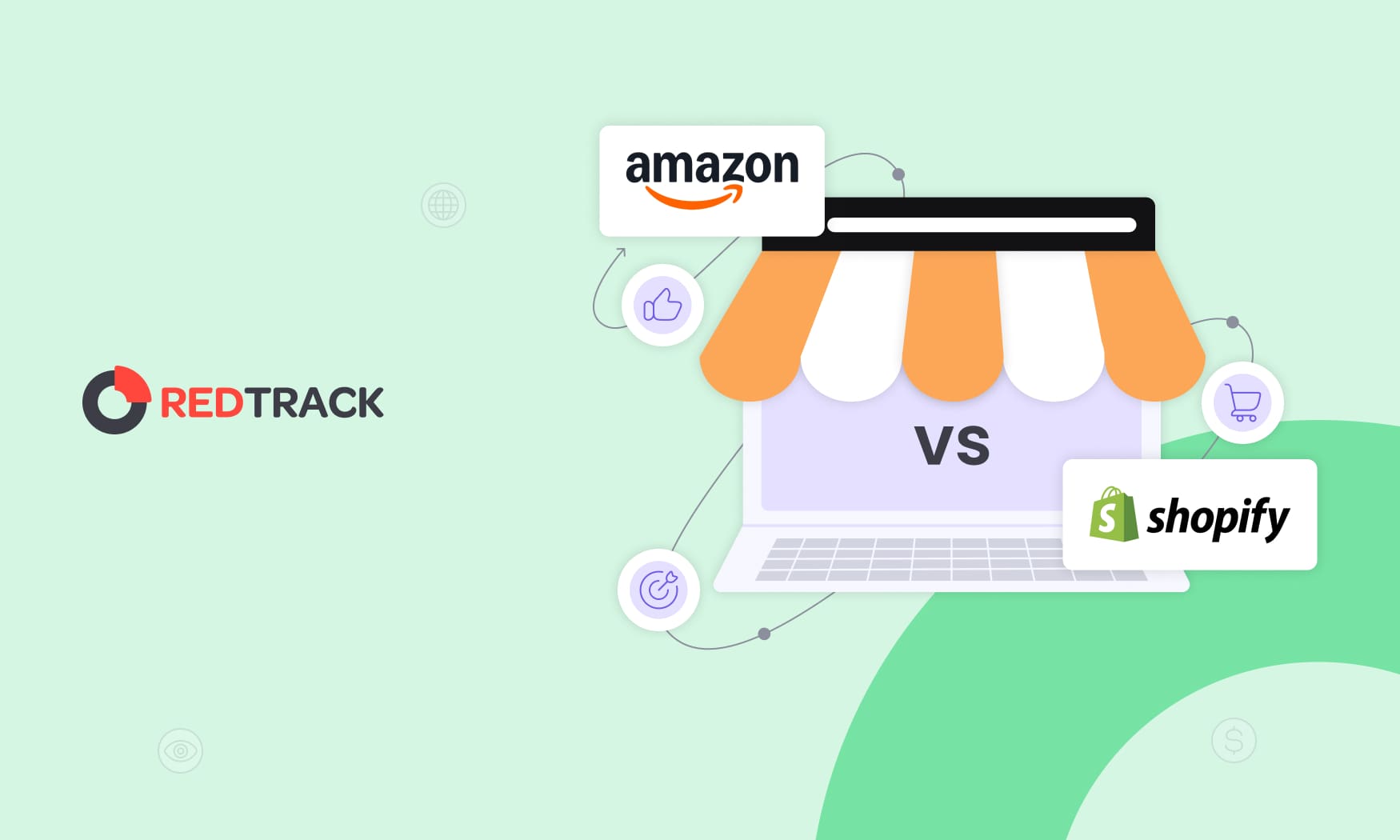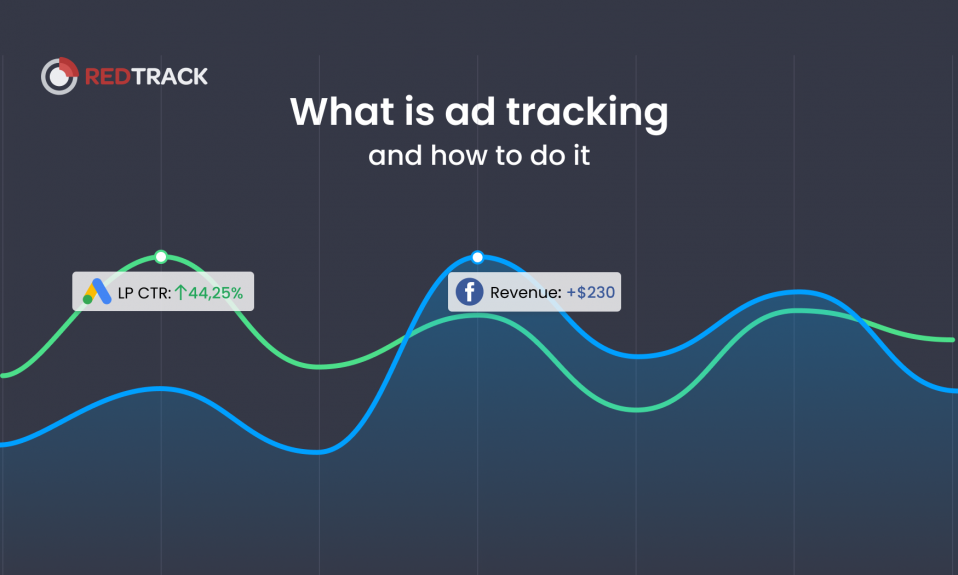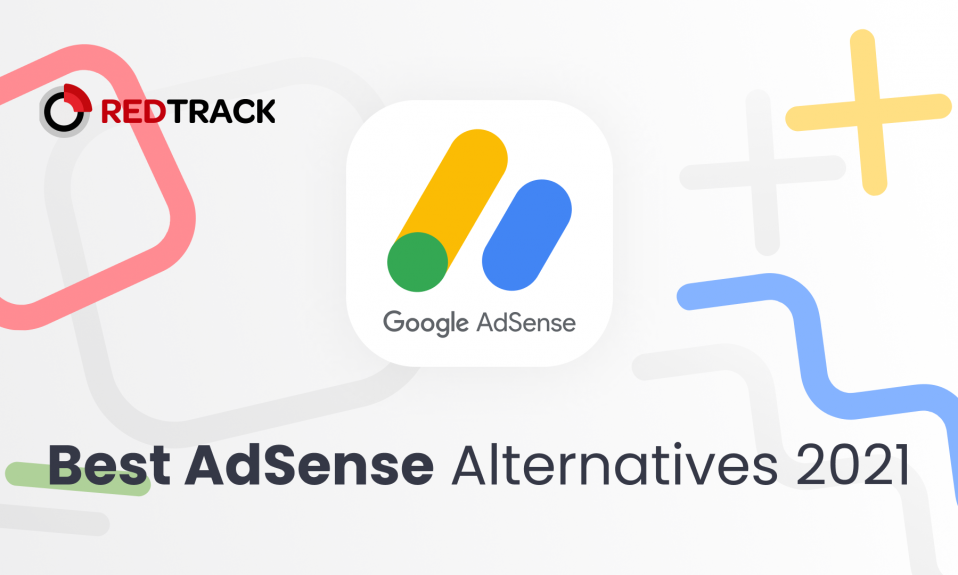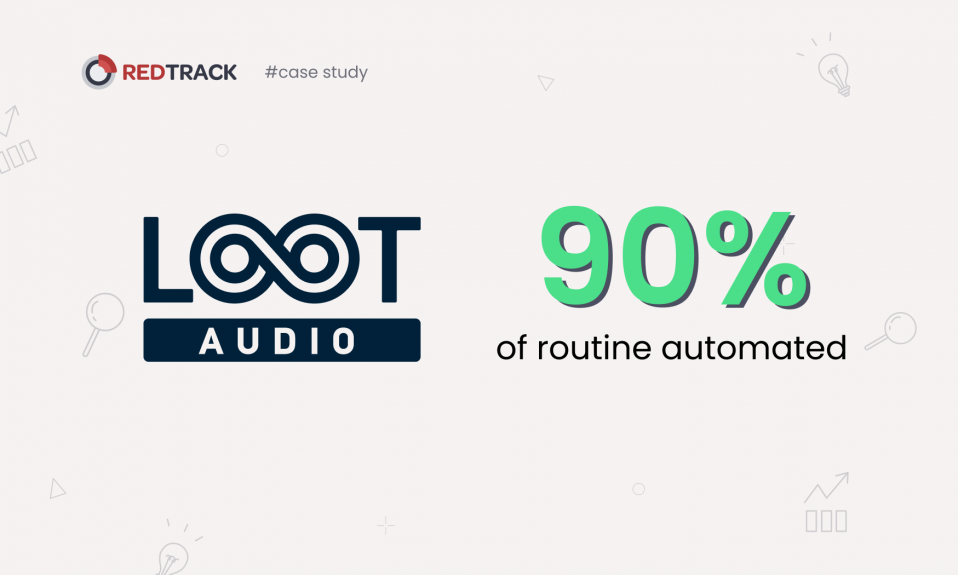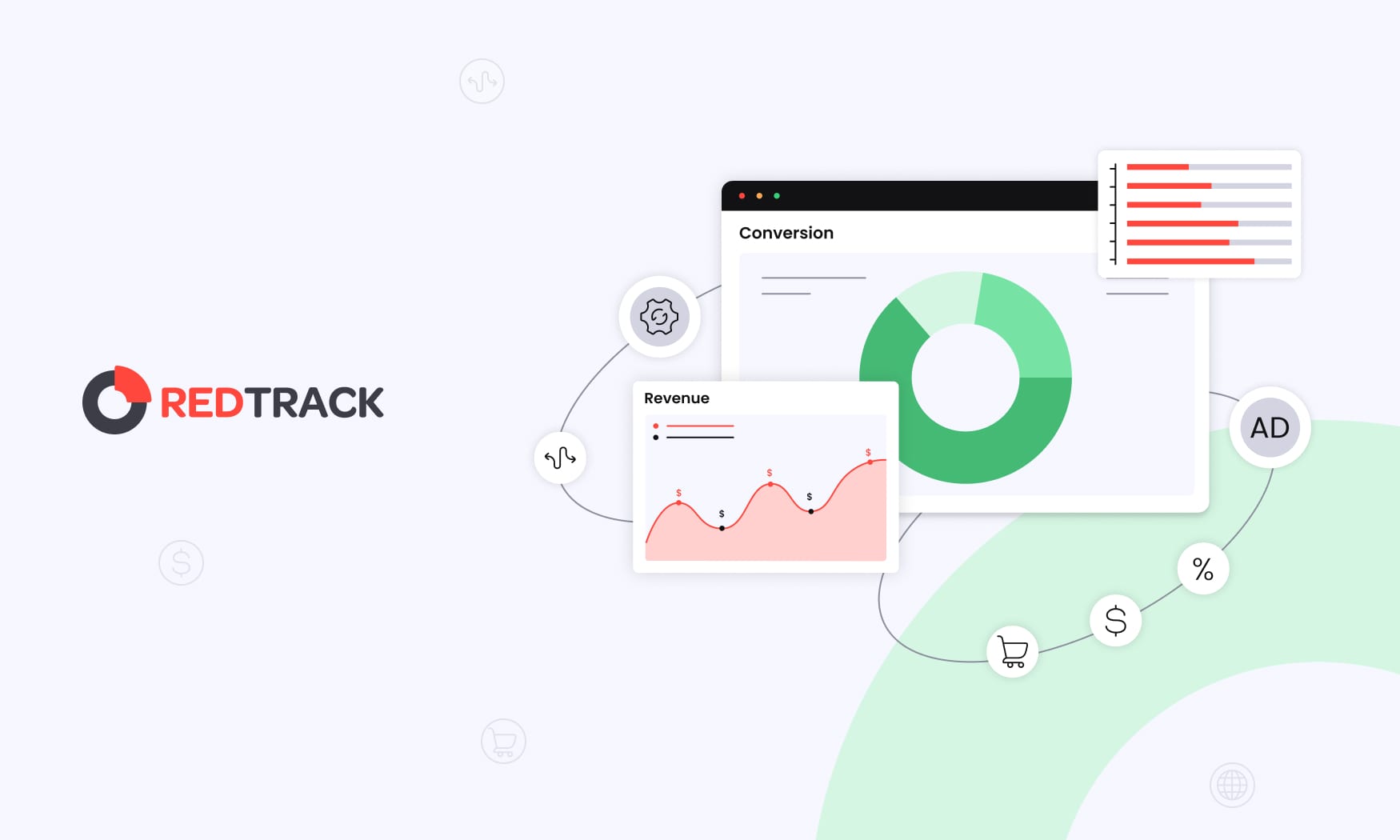
In the fast-moving world of online retail, understanding what drives your sales isn’t optional — it’s literally everything.
And that’s where ecommerce conversion tracking comes in. It’s the secret weapon that helps you see exactly which channels, campaigns, and actions turn browsers into buyers.
Without it, you’re flying blind — guessing where your revenue comes from instead of knowing for sure. With it, you gain the power to make smart, data-driven decisions that boost sales, cut wasted spend, and scale faster.
Whether you’re running paid ads, managing multiple stores, or juggling marketing platforms, accurate conversion tracking ties it all together.
In this guide, we’ll break down how it works, why it matters, and how tools like RedTrack help ecommerce teams track every conversion, attribute every sale, and grow with confidence in a privacy-first world.
What is Ecommerce Conversion Tracking?
Ecommerce conversion tracking is all about understanding which actions drive real revenue on your store. It’s the process of systematically monitoring every user interaction that leads to a valuable business outcome — from a completed purchase to a newsletter signup.
At its core, conversion tracking measures the percentage of visitors who complete meaningful actions — your conversions. These might include purchases, sign-ups, add-to-carts, product page views, or even checkout initiations.
Unlike general website analytics that focus on page views or session duration, conversion tracking digs into the actions that impact your bottom line. It’s not about how many people visit — it’s about how many buy.
Here’s the main difference: while traditional analytics might celebrate higher traffic numbers, ecommerce conversion tracking zeroes in on who actually converts and what drives that conversion. This helps you identify your strongest channels, optimize underperformers, and confidently invest in what delivers the highest ROI.
And here’s the thing — tracking conversions isn’t just about measurement. Done right, it unlocks growth opportunities across your entire funnel. With proper ecommerce conversion tracking, you can:
- Calculate true ROI from your marketing efforts
- Spot your top-performing products or categories
- Understand customer behavior patterns throughout the purchase journey
- Optimize the checkout experience to reduce cart abandonment
- Make smarter decisions about pricing, inventory, and promotions
For example, imagine your online clothing store finds that social media traffic converts less often than search traffic — but those social buyers spend more per order. That single insight can shift your focus toward higher-value audiences, refine your ad spend, and ultimately grow profit without increasing your budget.
Essential Ecommerce Conversion Metrics to Track

Understanding which conversion metrics to monitor is the foundation of effective ecommerce tracking. The right metrics reveal clear, actionable insights that directly influence your ability to grow sales and improve performance.
Primary Conversion Rate Calculation
Your primary conversion rate shows the percentage of visitors who make a purchase on your ecommerce site. The calculation is simple:
Conversion Rate = (Number of Purchases ÷ Total Visitors) × 100
On average, ecommerce stores see conversion rates between 2.5% and 3%, though results vary by niche. Fashion and luxury brands often convert around 1–2%, while categories like electronics or home goods can reach 3–4%.
Average Order Value and Revenue Impact
Average order value (AOV) shows how much customers spend on average per purchase. It’s a key metric that influences overall revenue and highlights where you can apply upselling or cross-selling strategies.
Average Order Value = Total Revenue ÷ Number of Orders
When tracked together with conversion rates, AOV gives a fuller view of your performance. Even a 10% increase in AOV can deliver the same revenue boost as a 10% traffic increase — but usually with far less marketing spend.
Shopping Cart and Checkout Metrics
Cart abandonment metrics uncover where shoppers drop off before completing a purchase. With an average 70% abandonment rate across industries, only 3 out of 10 shoppers who add items to their cart actually buy — a major opportunity for optimization.
Key metrics to track include:
- Add-to-cart conversion rate — the percentage of product page visitors who add items to their cart
- Checkout initiation rate — how many cart visitors start the checkout process
- Checkout completion rate — the share of customers who finish checkout after starting
- Payment information abandonment rate — users who reach the payment stage but never finalize the order
Product and Category Performance
Product-level conversion data highlights which items drive the most sales and which categories need attention. Tracking these insights helps you refine product positioning and improve overall store performance.
Focus on metrics such as:
- Product page conversion rate by SKU — see how each item performs individually
- Category-level performance comparisons — identify strong and weak segments
- Time spent on product pages before conversion — understand shopper engagement
- Return and refund rates by product type — spot quality or expectation gaps early
Customer Lifetime Value Tracking
Customer lifetime value (CLV) shows the total revenue you can expect from one customer over the entire relationship. It’s a key metric for understanding how much you can afford to spend on acquisition while staying profitable.
CLV = Average Order Value × Purchase Frequency × Customer Lifespan
Revenue and Session Metrics
Revenue per visitor and session value metrics help you understand the overall effectiveness of your ecommerce site:
- Revenue per visitor: Total revenue divided by total visitors
- Revenue per session: Total revenue divided by total sessions
- Pages per session: Indicates engagement depth before conversion
These metrics provide benchmarks for optimization efforts and help you set realistic goals for improvement initiatives.
Top Conversion Tracking Tools and Platforms
Choosing the right conversion tracking tools defines the accuracy and depth of your ecommerce data. Each platform comes with its own strengths, and the ideal fit depends on your store setup, budget, and technical needs.
RedTrack – The All-in-One Ecommerce Conversion Tracking Platform
RedTrack empowers ecommerce brands, agencies, and media buyers to track, attribute, and optimize every conversion across all ad channels from one dashboard.
With over 200 integrations and server-to-server tracking, it delivers precise, privacy-compliant data unaffected by browser limits or tracking pixel issues.
The platform captures 100% of your conversions through accurate multi-channel attribution and Conversion API integrations for Meta, Google, TikTok, Bing, and more. You can monitor every click, sale, and customer journey step in real time — without relying on modeled or delayed data.
RedTrack also goes beyond tracking. Its automation and cost sync features allow you to manage and optimize campaigns directly, reducing wasted ad spend and improving ROAS. With full data ownership and real-time reporting, RedTrack becomes your single source of truth for ecommerce performance.
Google Analytics 4 (GA4) Enhanced Ecommerce
Google Analytics remains one of the most popular analytics tools for ecommerce, offering detailed conversion tracking at no cost. With a connected Google Analytics account, GA4’s enhanced ecommerce features deliver deep insights into customer behavior and purchase activity.
Key GA4 capabilities include:
- Automatic ecommerce event tracking — tracks key actions like purchases, add_to_cart, and begin_checkout
- Custom conversion goals and audience definitions — tailor tracking to match business objectives
- Attribution modeling — understand how multiple touchpoints contribute to conversions
- Integration with Google Ads — connect campaigns for complete performance tracking
- Real-time conversion monitoring and alerts — stay updated on live activity
GA4 is powerful for mapping the full customer journey — from the first site visit to final purchase — helping you identify which marketing channels generate your most valuable conversions.
Facebook Pixel and Meta Conversions API
For brands focused on social media advertising, the Facebook Pixel is a key tracking tool for Meta Ads campaigns. It monitors user actions on your website, helping you create retargeting lists and build high-performing lookalike audiences.
The Meta Conversions API adds server-side tracking, improving data accuracy and solving the attribution gaps caused by iOS 14.5+ and browser restrictions. It provides a more reliable foundation for measuring and optimizing your social ad performance.
To make Meta tracking even more complete, RedTrack Relay offers a free solution that restores full conversion visibility.
It connects directly with Meta Ads, capturing every sale, lead, and event — even when pixels fail or data is blocked. Together, Pixel, Conversions API, and Relay ensure your Meta ad tracking remains accurate, privacy-compliant, and fully transparent.
Google Ads Conversion Tracking
Connecting your ecommerce store directly to Google Ads allows you to measure the true performance of your paid search campaigns. It tracks which keywords and ad groups drive real sales — not just clicks — giving you a clearer view of ROI.
Key benefits include:
- Automated bidding optimization powered by real conversion data
- Precise cost-per-acquisition (CPA) calculations
- Smarter Shopping campaign performance through data-driven insights
- Cross-device attribution to capture the full customer journey
Platform-Specific Analytics Tools
Most major ecommerce platforms include built-in analytics designed to help store owners monitor performance and conversions more effectively.
- Shopify Analytics — native conversion tracking with in-depth product performance reports, customer behavior insights, and marketing attribution data.
- WooCommerce Tracking — enhanced through plugins like MonsterInsights, offering advanced conversion tracking and detailed performance reports for WordPress-based stores.
- Magento Reports — enterprise-level analytics with powerful segmentation, revenue breakdowns, and full customer journey analysis.
Advanced Conversion Tracking Techniques
With stricter privacy rules and growing browser limitations, adopting advanced tracking methods is now essential to keep your conversion data accurate and your attribution reliable.
Server-Side Tracking Implementation
Server-side tracking overcomes the limits of traditional browser-based methods. Instead of depending on cookies or JavaScript that can be blocked, platforms like RedTrack send conversion data directly from your backend to analytics and ad platforms.
Key advantages of server-side tracking:
- Unaffected by ad blockers or browser privacy restrictions
- More accurate attribution for iOS 14.5+ and privacy-limited traffic
- Stronger data security and full compliance with privacy standards
- Minimal impact on website loading speed
Implementing server-side tracking involves:
- Setting up secure API connections to analytics or ad platforms
- Configuring backend systems to properly capture conversion events
- Establishing data validation and quality control processes
- Building fallback mechanisms to maintain data integrity
First-Party Data Collection Strategies
As third-party cookies phase out, first-party data becomes one of your most valuable assets. The goal is to build direct, permission-based relationships with customers across your owned channels and touchpoints.
Effective first-party data strategies include:
- Progressive profiling through account creation and personalized preferences
- Email and SMS subscription tracking with conversion attribution
- Customer survey integration linked to purchase behavior
- Loyalty program engagement tracking, including reward redemptions
This approach delivers more dependable customer insights, ensures privacy compliance, and strengthens long-term customer trust and retention.
We already covered how to collect first party data, so make sure to check it out!
Cross-Device and Multi-Platform Attribution
Today’s shoppers move between devices and platforms before making a purchase. Advanced attribution models are essential to capture this multi-touch journey accurately.
Key cross-device tracking considerations:
- User ID implementation for tracking logged-in customers across devices
- Probabilistic matching to connect anonymous sessions with high accuracy
- Platform-specific attribution windows to align conversion paths
- Cross-measurement between mobile apps and websites for complete visibility
Building a unified customer identification system helps you link touchpoints seamlessly while maintaining full respect for user privacy preferences.
AI-Powered Conversion Prediction
Machine learning now plays a major role in ecommerce optimization. By analyzing user behavior patterns, AI can predict the likelihood of conversion, allowing you to optimize campaigns and personalize experiences before a sale even happens.
AI applications in conversion tracking include:
- Lead scoring based on user engagement and on-site behavior
- Predictive cart abandonment alerts with automated recovery triggers
- Dynamic pricing adjustments guided by conversion probability
- Personalized product recommendations driven by real-time conversion data
While these methods require strong data infrastructure and technical expertise, they can significantly boost conversion rates and deliver a smoother, more personalized customer experience.
Multi-Touch Attribution Modeling
To truly understand what drives conversions, move beyond last-click attribution and measure the impact of every marketing touchpoint. Advanced attribution models distribute credit across the full customer journey, revealing how each interaction contributes to the final decision.
Common attribution model options include:
- First-touch attribution — measures the effectiveness of awareness campaigns
- Linear attribution — gives equal credit to all touchpoints in the path
- Time-decay attribution — assigns more weight to recent interactions
- Data-driven attribution — uses machine learning to determine each touchpoint’s true influence
Select the attribution model that best fits your business goals, campaign strategy, and the complexity of your customer journey.
If you’re still not sure about which one is the right one, make sure to check out our guide on all ecommerce attribution models and how to actually choose the right one!
Conversion Tracking for Different Business Models
Each ecommerce business model demands a customized ecommerce conversion tracking approach that reflects its unique customer behavior, sales cycle, and performance goals. Aligning your tracking setup with your specific model ensures your data truly represents business success.
B2C Ecommerce: Immediate Purchase Focus
Business-to-consumer (B2C) ecommerce often involves short sales cycles and impulse-driven purchases. Conversion tracking here should highlight immediate purchase behavior, campaign performance, and the effectiveness of your marketing strategies across different channels.
B2C tracking priorities include:
- Product page conversion rates and time-to-purchase metrics
- Seasonal campaign performance and promotional impact
- Social media influence on purchase decisions
- Mobile commerce conversion optimization
- Subscription tracking for recurring revenue models
The goal is to track high-volume conversions and maintain fast optimization cycles that capitalize on trending products, seasonal demand, and responsive marketing efforts.
B2B Ecommerce: Extended Sales Cycles
Business-to-business (B2B) ecommerce typically involves longer decision-making processes, multiple stakeholders, and higher-value transactions. Conversion tracking must capture these extended customer journeys and support data-driven decisions that guide relationship growth and pipeline optimization.
Key B2B conversion tracking elements include:
- Lead qualification scoring and progression tracking across the funnel
- Account-based marketing (ABM) performance measurement
- Attribution across multiple stakeholders and touchpoints
- Long-term customer lifetime value (CLV) tracking
- Contract renewal and expansion revenue monitoring
B2B tracking systems should measure engagement and conversion activity over weeks or even months, providing the insights needed to refine strategies and make confident, data-driven decisions.
Subscription Business Models
Subscription-based ecommerce models need tracking that goes far beyond the initial sign-up. The focus is on understanding long-term customer value, retention, and recurring revenue growth throughout the entire subscription journey.
Essential subscription metrics include:
- Trial-to-paid conversion rates and conversion timing
- Monthly and annual renewal rates for active subscribers
- Upgrade and downgrade tracking to measure plan movement
- Churn prediction accuracy and prevention campaign performance
- Customer reactivation results after cancellations or pauses
The goal is to monitor the entire subscription lifecycle — from first interest to renewal, expansion, and reactivation — to strengthen retention and maximize lifetime value.
Marketplace Platform Tracking
Multi-vendor marketplaces require tracking systems that measure both overall platform performance and individual vendor success. Accurate, transparent tracking ensures smooth operations and fair insights for all participants.
Marketplace-specific tracking considerations include:
- Vendor performance analysis and optimization opportunities
- Accurate commission calculation and transparent reporting
- Platform feature adoption and usage measurement
- Customer cross-vendor purchase behavior insights
- Search and discovery performance to evaluate visibility and engagement
Effective tracking should deliver insights for both platform operators and vendors, maintaining data privacy and competitive fairness. Every marketplace model benefits from a customized tracking approach aligned with its goals, user behavior, and success metrics.
Common Conversion Tracking Mistakes to Avoid
Steering clear of common setup and analysis errors is key to keeping your conversion tracking accurate, reliable, and actionable. Proper implementation ensures your data truly reflects performance and supports smarter business optimization.
Tracking Vanity Metrics Over Revenue Impact
Many businesses get caught up in vanity metrics — numbers that look good but don’t drive profit. Page views, social followers, and email open rates might seem encouraging, but they mean little without a clear link to conversions and revenue impact.
Instead of vanity metrics, focus on those that truly measure performance and profitability:
- Sales conversion rate and other revenue-focused conversion metrics — not just traffic volume
- Customer acquisition cost (CAC) compared to customer lifetime value (CLV)
- Profit and contribution margins segmented by marketing channel
- Return on ad spend (ROAS) for paid campaigns
- Quality score metrics that predict long-term customer value
The goal is to shift attention from surface-level engagement to metrics that reflect actual business growth and sustainable profitability.
Incomplete Technical Implementation
An incomplete or incorrect tracking setup can create data gaps that distort insights and lead to poor decisions. Even minor technical oversights can cause major blind spots in your reporting.
Common technical mistakes include:
- Missing mobile optimization, which fails to track conversions on smartphones and tablets accurately. With mobile commerce driving over 50% of ecommerce traffic, mobile tracking is critical for full visibility.
- Incomplete checkout tracking, which skips key abandonment points or payment completions. Every step — from product view to transaction — should trigger precise tracking events.
- Cross-domain tracking errors, where customer attribution is lost as users move between subdomains or related properties. Ensuring seamless cross-domain tracking keeps the full journey intact.
Privacy Regulation Non-Compliance
Ignoring or mishandling privacy regulations like GDPR and CCPA can lead to serious legal risks and loss of customer trust. Compliance isn’t optional, but essential for both credibility and sustainable growth.
Common compliance mistakes include:
- Collecting personal data without transparent consent mechanisms
- Lacking clear opt-out options for tracking preferences
- No defined data retention or deletion policies, leading to potential misuse
- Sharing customer data with third parties without proper authorization
To stay compliant, use consent management platforms and adopt a privacy-by-design tracking framework. This approach safeguards user rights while still enabling meaningful, compliant data collection for your marketing and analytics efforts.
Attribution Window and Cross-Device Oversights
Relying on default attribution windows can cause major gaps in your reporting. If your customers take longer to decide — for example, researching for weeks before buying — a 7-day window may miss significant conversions and underreport performance.
Cross-device behavior adds another layer of complexity. Customers often explore products on mobile before completing their purchase on desktop. Without proper cross-device tracking in place, conversions may be misattributed, giving the wrong channels credit and distorting ROI.
The key is to align your attribution windows and tracking setup with your actual customer journey, ensuring every touchpoint and device interaction is accurately represented.
Neglecting Tracking Maintenance
Ecommerce conversion tracking isn’t a one-time setup — it needs regular maintenance and optimization to stay accurate. Ignoring updates or testing can quickly lead to unreliable data and poor decision-making.
Common maintenance oversights include:
- Not updating tracking codes after website redesigns or content changes
- Skipping accuracy tests following plugin or platform updates
- Overlooking data discrepancies or inconsistencies between channels
- Ignoring seasonal adjustments that affect attribution windows
- Failing to train team members on how to interpret tracking data correctly
Platforms like RedTrack help eliminate these issues with automated validation, real-time cost syncs, and centralized tracking management. Establishing a regular audit schedule and routine testing keeps your tracking setup accurate, reliable, and optimized for long-term performance.
Optimizing Based on Conversion Data
Turning your conversion tracking insights into actionable strategies is where real growth happens. With systematic analysis and continuous testing, you can transform raw data into decisions that drive measurable improvements in sales performance.
A/B Testing Checkout and Product Pages
Use your conversion data to pinpoint optimization opportunities and run structured A/B tests. Since checkout pages attract high-intent shoppers, even small improvements here can deliver significant gains in conversions and revenue.
Key checkout optimization tests include:
- Single-page vs. multi-step checkout to reduce friction
- Guest checkout vs. account creation for faster transactions
- Payment method order and availability to match customer preferences
- Security badge placement and trust messaging for reassurance
- Form field reduction and progressive disclosure to simplify completion
For product pages, the goal is to convert browsing into buying intent through layout, trust signals, and usability improvements.
Common product page optimization tests include:
- Image gallery layouts and zoom functionality for better product visualization
- Customer reviews and social proof presentation
- Add to cart button placement, color, and size variations
- Product description structure and formatting clarity
- Related product recommendations for effective cross-selling
Identifying and Fixing Funnel Bottlenecks
Your conversion data highlights exactly where customers drop off in their purchase journey. By identifying these funnel bottlenecks, you can apply targeted fixes that improve flow, reduce friction, and lift overall conversion rates.
Effective funnel analysis techniques include:
- Step-by-step conversion rate tracking across the entire purchase path
- Heat map analysis to visualize interaction and scroll behavior
- Session recording reviews to pinpoint abandonment triggers
- Exit page analysis to prioritize improvement opportunities
- Mobile vs. desktop comparisons to uncover device-specific issues
Prioritize fixes based on impact and traffic volume, focusing first on the stages with the highest abandonment rates to deliver the most significant performance gains.
Behavioral Pattern Personalization
Leverage your conversion behavior data to deliver personalized experiences that boost each customer’s likelihood to convert. Tailored interactions not only increase sales but also strengthen engagement and loyalty.
Personalization opportunities include:
- Product recommendations aligned with browsing and purchase history
- Dynamic pricing or special offers targeted to specific customer segments
- Customized email campaigns based on past purchase behavior
- Retargeting ads tailored to individual abandonment actions
- Content personalization using geographic or demographic insights
Personalization powered by behavioral data helps turn intent into action — creating experiences that feel relevant, timely, and conversion-driven.
Cart Abandonment Recovery Strategies
Cart abandonment is one of the biggest lost revenue opportunities in ecommerce — but also one of the easiest to recover with the right data-driven approach. By leveraging abandonment behavior data, you can create systematic campaigns that bring shoppers back to complete their purchases.
Effective recovery strategies include:
- Triggered email sequences reminding customers of abandoned products
- Exit-intent popups that offer incentives or assistance before they leave
- Retargeting ads showcasing the exact items left in the cart
- SMS recovery messages to reach mobile-first customers instantly
- Live chat prompts for proactive engagement on high-value carts
Strategic recovery campaigns not only reclaim lost sales but also improve the overall customer experience by meeting shoppers at the right moment with the right message.
Marketing Channel Budget Optimization
Your conversion attribution data is the key to smarter spending. By analyzing which channels and campaigns deliver the highest-value conversions and strongest ROI, you can direct budgets where they drive the most impact.
Effective budget optimization involves:
- Calculating customer acquisition cost (CAC) for each marketing channel
- Measuring customer lifetime value (CLV) and repeat purchase rates by source
- Analyzing seasonal performance trends to guide spend timing
- Testing budget reallocations between high- and low-performing channels
- Monitoring overall impact on conversion volume and profitability
Regular, data-driven budget optimization ensures every dollar spent fuels measurable growth, helping you maximize return on marketing investment (ROMI) while maintaining long-term performance efficiency.
Privacy-Compliant Conversion Tracking
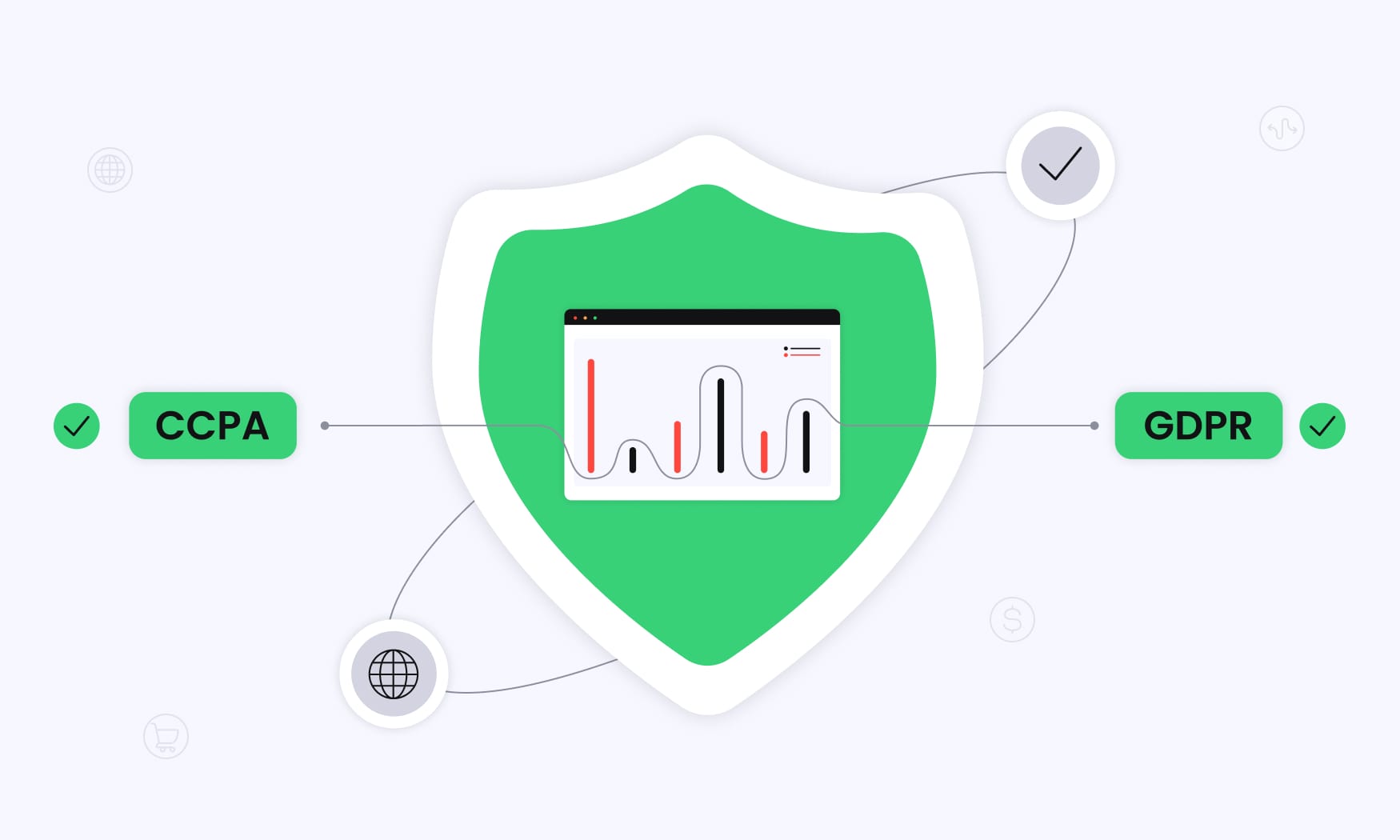
Balancing accurate conversion tracking with privacy compliance requires careful planning, transparent consent management, and strong data protection practices.
GDPR and CCPA Compliance Requirements
Both GDPR and CCPA define how personal data can be collected, stored, and used — directly influencing your tracking setup and consent strategy.
GDPR compliance essentials:
- Obtain explicit consent for all non-essential tracking activities
- Provide clear explanations of data collection purposes and duration
- Offer simple opt-out mechanisms for users withdrawing consent
- Maintain data processing agreements with all third-party providers
- Conduct regular privacy impact assessments for tracking setups
CCPA requirements include:
- Transparent disclosure of personal information collected
- Right to deletion and clear implementation procedures
- Opt-out options for data sharing or selling
- Non-discrimination policies for users who exercise privacy rights
Consent Management Platform Implementation
Consent Management Platforms (CMPs) create the foundation for privacy-compliant tracking without compromising user experience.
Core CMP capabilities include:
- Granular consent options for various tracking purposes
- Integration with analytics and ad platforms
- Automatic script blocking for non-consenting users
- Consent renewal interfaces for ongoing compliance
- Detailed compliance reporting and audit trail storage
Choose a CMP that integrates smoothly with your tracking infrastructure while providing comprehensive regulatory coverage.
First-Party Data Strategies
Reducing reliance on third-party tracking is essential for long-term compliance. Building a strong first-party data ecosystem helps maintain accuracy and trust.
Recommended first-party data tactics:
- Offer account creation incentives and clear value propositions
- Use progressive profiling tied to purchase and engagement history
- Track email and SMS subscriptions with conversion attribution
- Connect loyalty program data to purchase behavior
- Collect survey and feedback insights to enrich customer profiles
Data Anonymization and Retention Policies
Protecting customer data while maintaining analytical value requires both technical safeguards and procedural controls.
Privacy protection best practices:
- Anonymize IP addresses and generalize location data
- Apply hashing and encryption to customer identifiers
- Set automated deletion timelines for expired data
- Use access controls and audit logs for sensitive information
- Perform regular security and vulnerability assessments
Conclusion: The Future of Ecommerce Conversion Tracking
Ecommerce is moving fast — faster than ever, truth be told.
Privacy updates, disappearing cookies, and constant changes in ad platforms have made one thing crystal clear: you can’t grow what you can’t track. Conversion tracking isn’t just a back-end process anymore — it’s your growth superpower.
The real winners in today’s market are the brands that turn tracking data into quick, confident decisions. It’s not about counting clicks or checking how many people visited your store. It’s about seeing the full story — which ads drive real sales, how customers move across channels, and what actions truly impact revenue.
That’s exactly where RedTrack comes in.
Built for performance-driven ecommerce brands, agencies, and media buyers, RedTrack gives you total clarity across all your campaigns. With server-side tracking, multi-channel attribution, and direct Conversion API integrations for Meta, Google, TikTok, and more, you get every conversion tracked accurately — no matter how privacy rules evolve.
And the best part? RedTrack doesn’t just track — it helps you act. You can automate campaign optimization, push real-time cost updates, and analyze 50+ metrics in one clean, customizable dashboard. No more jumping between tools or second-guessing which channel deserves the credit.
At the end of the day, better tracking means better marketing. When your data is accurate, your decisions are faster, your ROAS is higher, and your growth becomes predictable.
So if you’re ready to future-proof your tracking and take control of your ecommerce performance — RedTrack is the logical next step. Because when you know exactly what’s working, scaling becomes simple.




